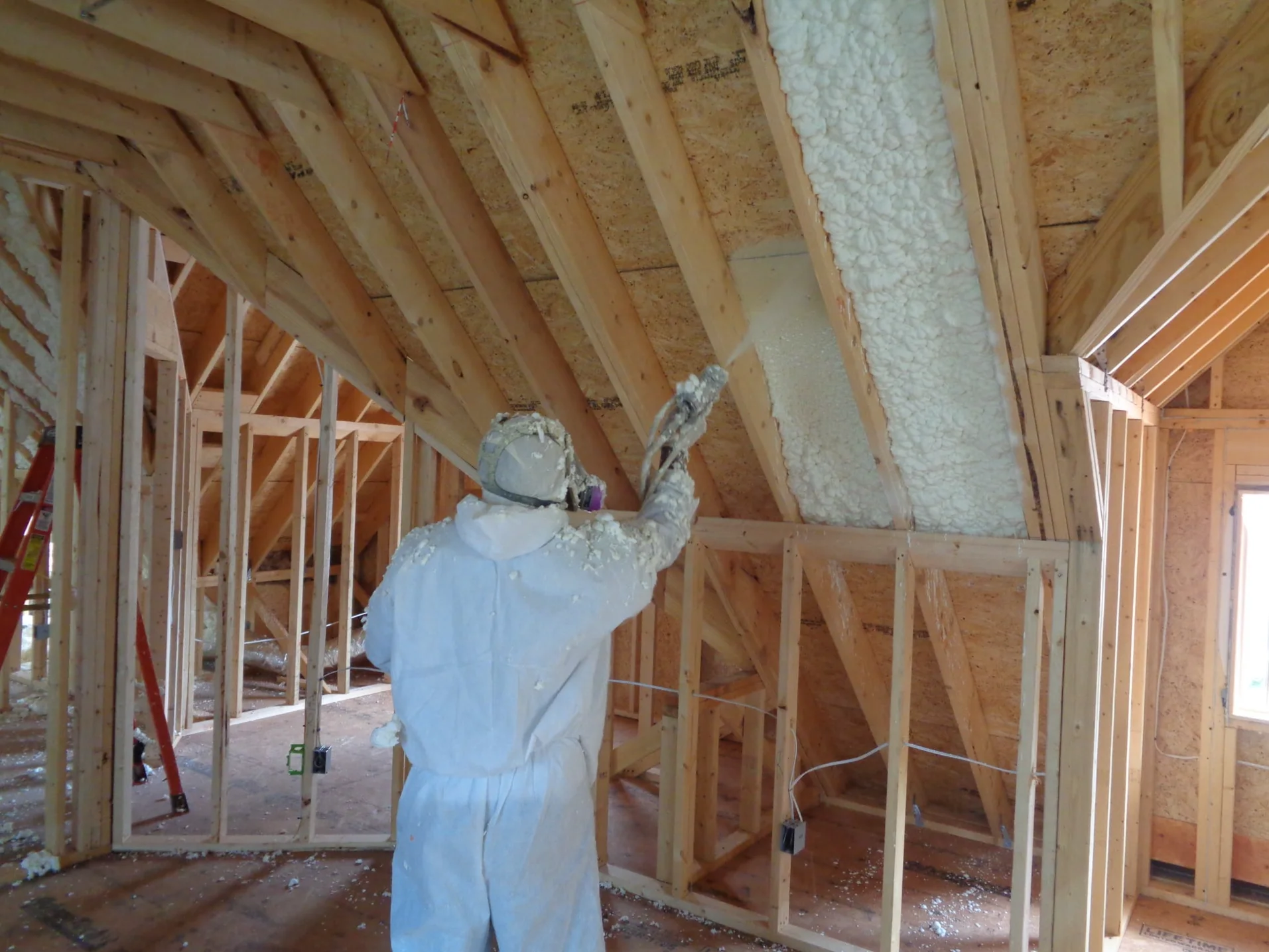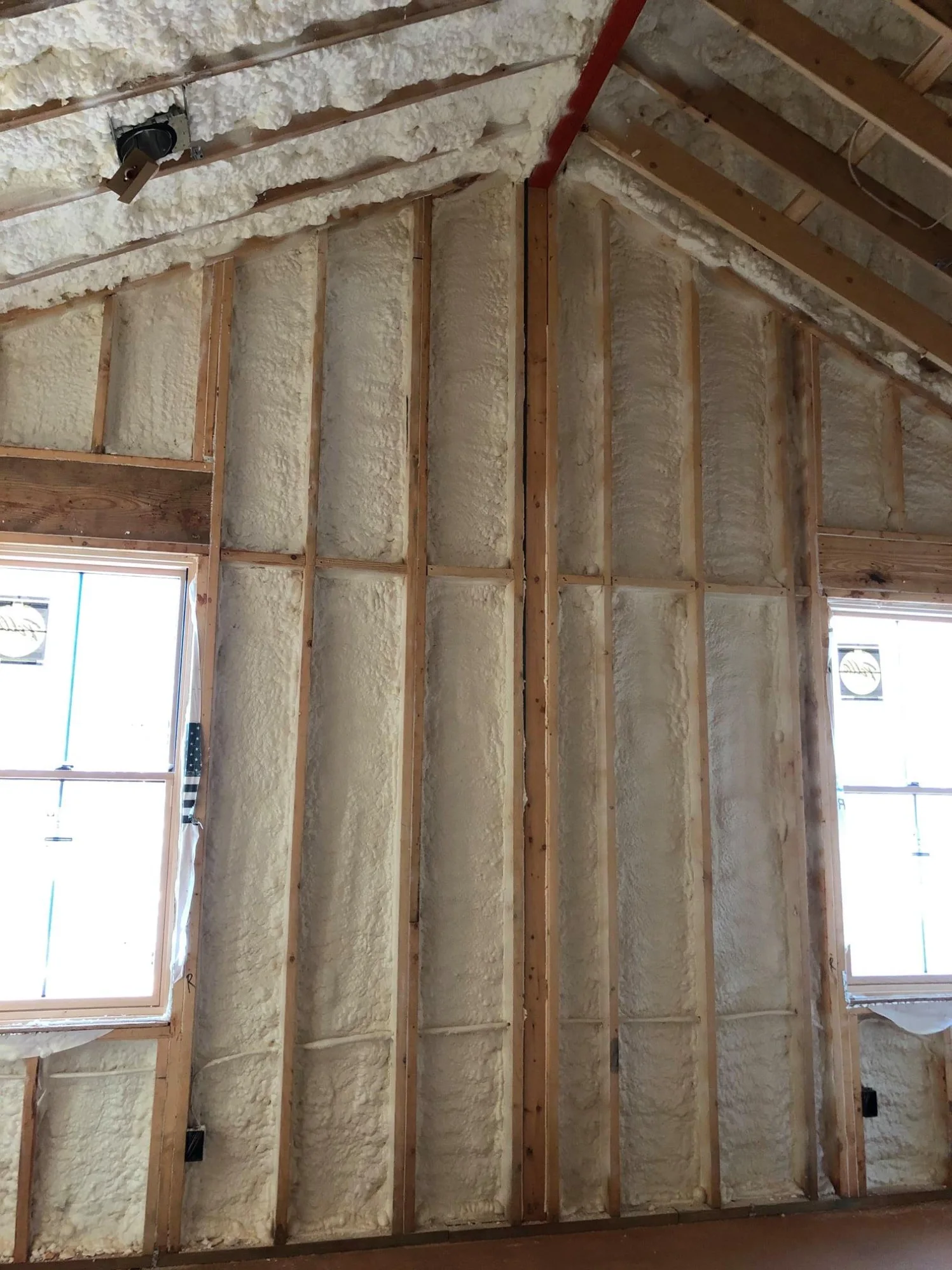
Spray foam insulation can last the lifetime of a home, typically between 30 to 80 years, depending on the type used, installation quality, and environmental conditions. Closed-cell spray foam generally lasts longer than open-cell spray foam due to its higher density and moisture resistance.
For residential properties in regions with humidity variations like Kansas, proper application and airtight sealing are key to ensuring long-term performance. This guide outlines expected lifespans, material comparisons, and important decision points using direct, experience-based observations from insulation jobs across varied building types.
Ozark Eco Foam specializes in spray foam applications across residential, commercial, and agricultural buildings in the Midwest. Information provided is based on real project outcomes and verified technical data.
| Spray Foam Type | Expected Lifespan | Structural Rigidity | Moisture Resistance | Common Use Cases |
|---|---|---|---|---|
| Closed Cell | 50-80 years | High | Excellent | Foundations, crawl spaces, roofs |
| Open Cell | 30-50 years | Moderate | Low | Walls, attics, soundproofing |
When used in combination, open-cell for interior walls and closed-cell for moisture-prone areas can balance insulation and cost while extending effectiveness.
Closed-cell foam has a higher R-value per inch and forms a rigid barrier. Its dense structure improves durability against moisture and structural shifts.
In Kansas and nearby regions, temperature swings and humidity levels impact insulation longevity. Closed-cell resists moisture better, reducing the risk of premature breakdown in humid zones.
Direct sunlight degrades exposed foam over time. Foam used in attics, crawl spaces, or behind drywall lasts significantly longer due to controlled conditions.
Improper application often leads to cracking, shrinkage, or incomplete coverage. Always verify crew experience and product mix accuracy on-site.
Foundational shifts in aging homes can place stress on insulation. Closed-cell options help retain structural integrity.
| Property | Closed Cell Spray Foam | Open Cell Spray Foam |
|---|---|---|
| R-Value per Inch | 6.0 – 7.0 | 3.5 – 3.9 |
| Density | 1.75 – 2.2 lb/ft³ | 0.4 – 0.5 lb/ft³ |
| Vapor Barrier Capability | Yes | No |
| Expansion Ratio | 30x | 100x |
| Air Barrier Effectiveness | Excellent | Good |
| Water Absorption | Low | High |
Conduct a visual inspection of attic and crawl space insulation every 3-5 years. Focus on damp spots, detached panels, or surface discoloration.

When installed correctly, no noticeable deterioration should occur for at least 30 years. UV exposure or water intrusion accelerates degradation.
No. The original layer must be removed if it has degraded. New foam won’t adhere properly to compromised surfaces.
For unvented or moisture-prone attics, closed-cell offers better performance. Open-cell may suit ventilated spaces with low humidity.
Spray foam deters most pests but is not pest-proof. Entry points in surrounding structures must be sealed to prevent nesting.
Spray foam insulation offers decades of effective thermal and moisture protection when the right type is used in the correct location. Closed-cell foam lasts longer and performs better under stress, while open-cell remains a solid choice for interiors. Long-term reliability depends on both material quality and installation accuracy.
Assess the space, intended use, and environmental exposure before choosing the right insulation approach.
For expert guidance on choosing and installing long-lasting spray foam insulation, contact Ozark Eco Foam at (417) 572-5893 or email ozarkecofoam@gmail.com. Backed by field-tested experience, Ozark Eco Foam provides solutions that match local climate demands and building requirements.
Spray foam outlasts fiberglass by 2-3 times. Fiberglass typically requires replacement within 15-25 years.
Unlike loose-fill or batts, spray foam adheres to surfaces and does not settle under normal conditions.
Rising energy bills, uneven indoor temperatures, or visible shrinkage may indicate a problem.
Only if installed in an already damp space without adequate drying time. Closed-cell resists this risk better than open-cell.
Building codes focus on R-value and application safety, not lifespan. Longevity depends on material quality and install precision.